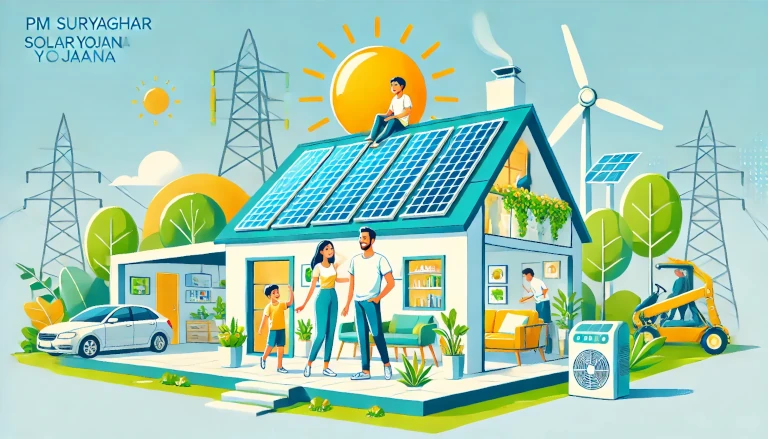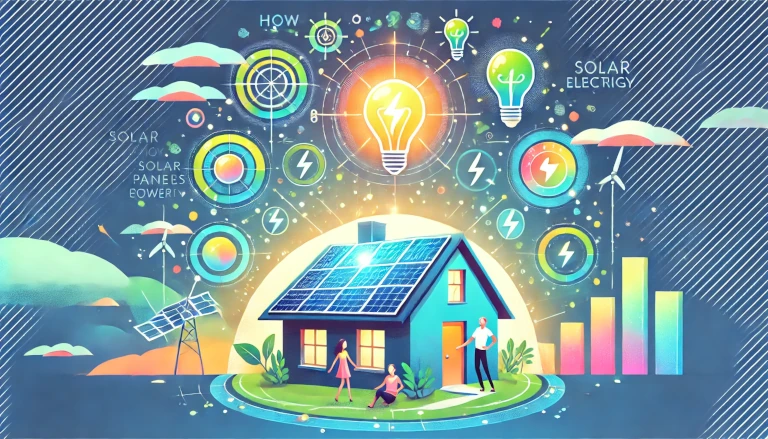If you’re consuming 300 units of electricity per month and facing a monthly bill of ₹3,500, switching to solar panels could be a cost-effective solution. This guide breaks down the economics ( Solar Panel Cost ) of using solar panels to reduce your electricity bill to zero, covering everything from system costs to potential savings.
Understanding Your Electricity Usage and Costs 💡
For a household that uses 300 units (kWh) of electricity monthly with a bill of ₹3,500, you are paying on an average around ₹11.67 per unit. By switching to solar, you can generate enough power to cover your monthly usage, reducing your reliance on the grid and saving money over time.
How Many Solar Panels Do You Need? 🛠️
To cover 300 units of electricity per month, a system of approximately 3kW is needed. Here’s a breakdown of how to calculate the required system size:
- Calculate Daily Usage:
Monthly Usage (300 units) ÷ 30 days = 10 units per day. - Consider Peak Sun Hours:
In most parts of India, you can expect about 5 hours of peak sunlight daily. - Calculate System Size:
Daily Usage (10 units) ÷ 5 sun hours = 2 kW
Adding a margin for cloudy days, a 3kW system would be sufficient.
A 3kW system can generate around 360 units per month under optimal conditions, which should be enough to cover your monthly electricity usage.
How Much Does a 3kW Solar System Cost? 💸
The cost of a 3kW solar panel system varies, but it typically ranges from ₹1,20,000 to ₹2,10,000. Factors affecting cost include the type of panels (monocrystalline vs. polycrystalline) and installation charges. Here’s a breakdown of costs:
- Panels: Around ₹90,000 – ₹1,20,000
- Inverter: Approximately ₹30,000 – ₹40,000
- Installation and Miscellaneous: Around ₹30,000 – ₹50,000
Total Estimated Cost: ₹1,50,000 – ₹2,10,000
How to Offset Costs with Government Subsidies 🏷️
In India, various government incentives can reduce the cost of solar installations. For residential systems, subsidies can cover up to 30-40% of the total cost. Applying these subsidies can bring your investment down, making it more affordable.
For example, with a 30% subsidy, a 3kW system costing ₹2,00,000 would be reduced to ₹1,40,000.
Advantages of Going Solar to Eliminate Your Electricity Bill 📈
- Cost Savings: You’ll significantly reduce or eliminate your monthly electricity bill, leading to long-term savings.
- Environmental Benefits: Solar panels reduce your carbon footprint, contributing to a cleaner environment.
- Energy Independence: By generating your own power, you’re less dependent on grid electricity, which can be unstable during peak times or outages.
- Low Maintenance Costs: Once installed, solar panels require minimal maintenance, usually just occasional cleaning.
Disadvantages and Considerations 📉
- Upfront Costs: Although solar panels save money over time, they require a significant initial investment.
- Weather Dependency: Solar panels generate less energy on cloudy days, which could affect power availability unless you have a battery backup.
- Space Requirements: A 3kW system requires adequate roof space for installation, which may not be feasible for all households.
Calculating the Return on Investment (ROI) 📊
Let’s calculate how long it will take for your solar panels to pay for themselves through electricity bill savings:
- Monthly Savings:
Since your current bill is ₹3,500, installing solar panels will save you this amount monthly. - Annual Savings:
₹3,500 x 12 months = ₹42,000 per year. - Break-Even Point:
Assuming a cost of ₹1,50,000, it would take about 3.5 years to break even.
After the break-even point, the savings continue for the lifespan of the solar panels (typically 25 years), amounting to significant savings over time.
Where to Install Solar Panels on Your Home 🏠
Solar panels are most commonly installed on rooftops, as they receive optimal sun exposure. Ensure your roof has:
- Adequate Sunlight: Areas with minimal shading will generate the most power.
- Sufficient Space: A 3kW system generally requires about 20 square meters of roof space.
When to Consider Battery Storage 🔋
For households looking for a complete off-grid solution, battery storage can help store excess energy generated during the day. However, batteries add to the initial cost, with a typical system costing an additional ₹1,00,000 – ₹2,00,000 depending on storage capacity. This option is ideal if you want uninterrupted power supply even during nighttime or cloudy days.
How to Choose the Right Solar Panels for Your Needs 📋
Consider the following when selecting solar panels:
- Panel Efficiency: Higher efficiency panels generate more power, making them ideal for smaller roofs.
- Warranties and Lifespan: Look for panels with warranties of 20-25 years to ensure durability and performance.
- Type of Panels: Monocrystalline panels are more efficient but slightly more expensive than polycrystalline ones.
By investing in a 3kW solar panel system, you can eliminate your ₹3,500 monthly electricity bill and achieve long-term savings. With government subsidies and various financing options, solar panels are more affordable than ever. Whether you aim to save money, reduce your carbon footprint, or gain energy independence, solar panels offer a sustainable solution for your home.
Discover more from Green Ecosystem - Renewable Energy, Agriculture, and Environmental Sustainability
Subscribe to get the latest posts sent to your email.


